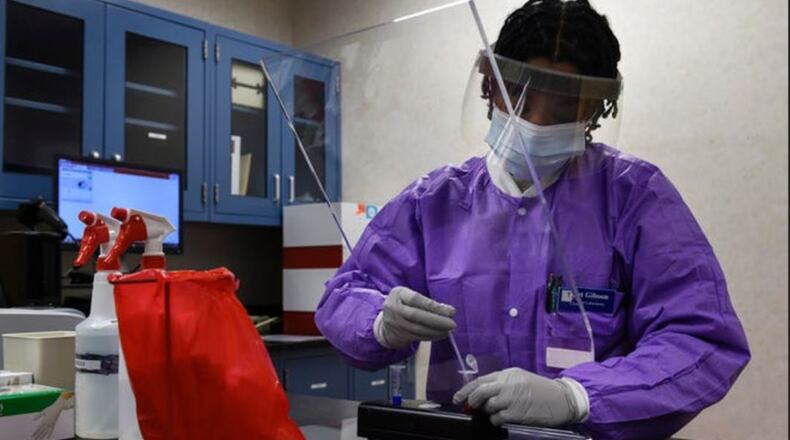“It is an honor to lead the DAF ACT on behalf of Gen. [Arnold] Bunch for the AFMC enterprise,” Trevino said. “AFMC’s continued support to HHS, as part of the national COVID-19 response, is perfectly aligned with our command’s mission to power the world’s greatest Air Force, collaborate deliberately and innovate at all levels.”
The transition to AFMC as the lead organization for Air Force acquisition support comes after Maj. Gen. Cameron Holt, deputy assistant secretary for contracting, Office of the Assistant Secretary of the Air Force for Acquisition, Technology and Logistics, led the effort on behalf of the service since the pandemic began in March 2020.
At the direction of Dr. William Roper, the then-service acquisition executive for the Air Force, the DAF ACT was established within 48 hours in March 2020. Focused on supporting the national COVID-19 response, this task force employed a decentralized, cross-major command execution framework comprised of acquisition teams spread across the continental United States and operating in a virtual environment.
The task force was established to execute the requirements of the Office of the Secretary of Defense, Defense Assisted Acquisition, or DA2, Cell, and synchronize and support the acquisition execution of DOD’s COVID-19 response to interagency requests for medical resources.
During the last 16 months, the DAF ACT executed nearly $4 billion in HHS requirements for personal protective equipment manufacturing capability, rapid point-of-care testing technologies, and testing and diagnostics supply chain constraints using innovative rapid contracting tools. To date, this represents 40 contracts already awarded, with roughly 20 more approaching contract award.
The May 2021 signature of a memorandum of understanding, or MOU, between the Defense Department and the HHS continues the agencies’ partnership in defeating COVID-19 and preparing for future public health emergencies.
This memo establishes the framework under which the DOD continues to support HHS with acquisition efforts to:
· expand domestic industrial capacity of health and medical resources;
· procure diagnostics and medical supplies for the Strategic National Stockpile; and,
· accelerate the development, manufacture and distribution of COVID-19 vaccines and therapeutics.
The rapid procurement of these items deemed essential during this public health emergency is provided by the DOD on a fully reimbursable basis.
The DAF ACT’s continued execution through AFMC will be accomplished by identifying key personnel from across Headquarters AFMC and the command’s six centers. Air Force Installation and Mission Support Center, Air Force Life Cycle Management Center, Air Force Nuclear Weapons Center, Air Force Sustainment Center, Air Force Test Center and the Air Force Research Laboratory will rapidly assemble the resources, acquisition strategies and tools needed to achieve the acquisition agility in support of the nation’s unprecedented challenges related to the COVID-19 pandemic.
Personnel are expected to be geographically located at the Pentagon and 19 different AFMC organizations, with an estimated total of 200 existing personnel supporting the operation.
“Just as we have the responsibility to develop, support, and sustain war-winning capabilities and deliver iron on the ramp for the warfighter, both home and abroad at a moment’s notice, the fight against COVID-19 demands urgency,” Trevino said. “Our acquisition professionals are mission-focused business leaders who embody the ‘Accelerate Change or Lose’ mentality and adapt to changing pandemic conditions while taking care of our Airmen and Guardians. I am confident our team will carry on the excellent work that began under Maj. Gen. Holt’s leadership in 2020.”
Additionally, the DAF ACT will capitalize on its momentum with the ultimate goal of expanding the industrial base across several categories of COVID-19 resources. It has successfully expanded industrial base capacity for supplies, goods and services for items such as personal protective equipment, raw materials, hygiene and infection-control products, medical devices, and testing supplies required to support federal, state, local, territorial and tribal governments’ requirements.
These efforts have ensured the United States has a resilient supply chain and testing infrastructure able to withstand a future pandemic.
About the Author

